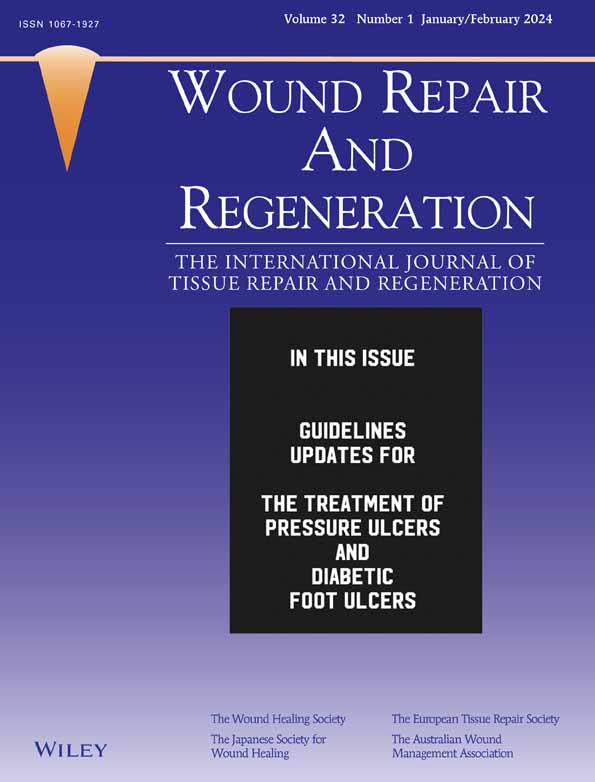Effect of hydrocolloid dressings on preventing air leakage when applying negative pressure wound therapy to the perineum, buttocks, and sacrococcygeal region
Chao Wang and Rui Li contributed equally to this work.
Abstract
Maintaining a vacuum when applying negative pressure wound therapy (NPWT) is the key to its function, which is a challenge in the perineum, buttocks, and sacrococcygeal region. A retrospective cohort study was conducted to assess the effect of hydrocolloid dressings on preventing air leakage when applying NPWT in these regions. There were 61 patients in Group A (without the aid of hydrocolloid dressings) and 65 patients in Group B (with the aid of hydrocolloid dressings). The hydrocolloid dressing-assisted NPWT significantly reduced the incidence of air leakage compared with conventional NPWT placement (24.6% vs. 7.7%; risk ratio, 3.20; 95% confidence interval, 1.24–8.27; p = 0.009), while decreasing the number of open NPWT applications (2.2 vs. 1.7; difference, 0.43; 95% confidence interval, 0.19–0.66; p < 0.001), shortening hospital stays (20.1 vs. 16.1; difference, 4.07; 95% confidence interval, 1.68–6.46; p = 0.01), and reducing the incidence of adverse skin events (18.0% vs. 4.6%; risk ratio, 3.91; 95% confidence interval, 1.14–13.34; p = 0.017). These findings support the routine use of hydrocolloid dressing-assisted NPWT placement in the perineum, buttocks, and sacrococcygeal region.
CONFLICT OF INTEREST STATEMENT
The authors declare no conflicts of interest.
Open Research
DATA AVAILABILITY STATEMENT
The data are available from the corresponding author on reasonable request.




